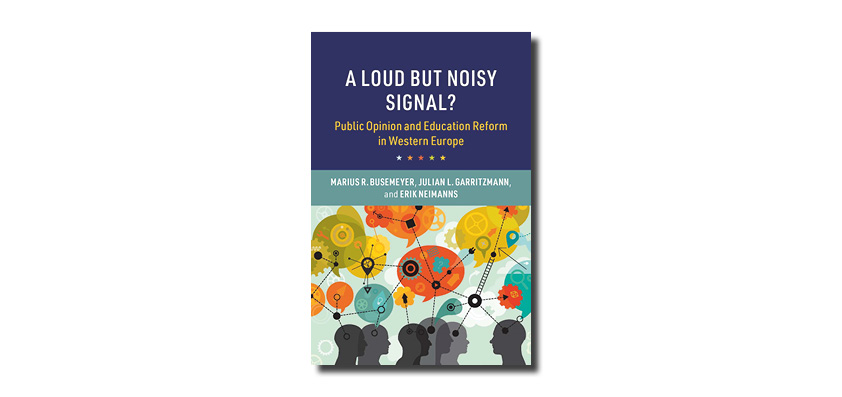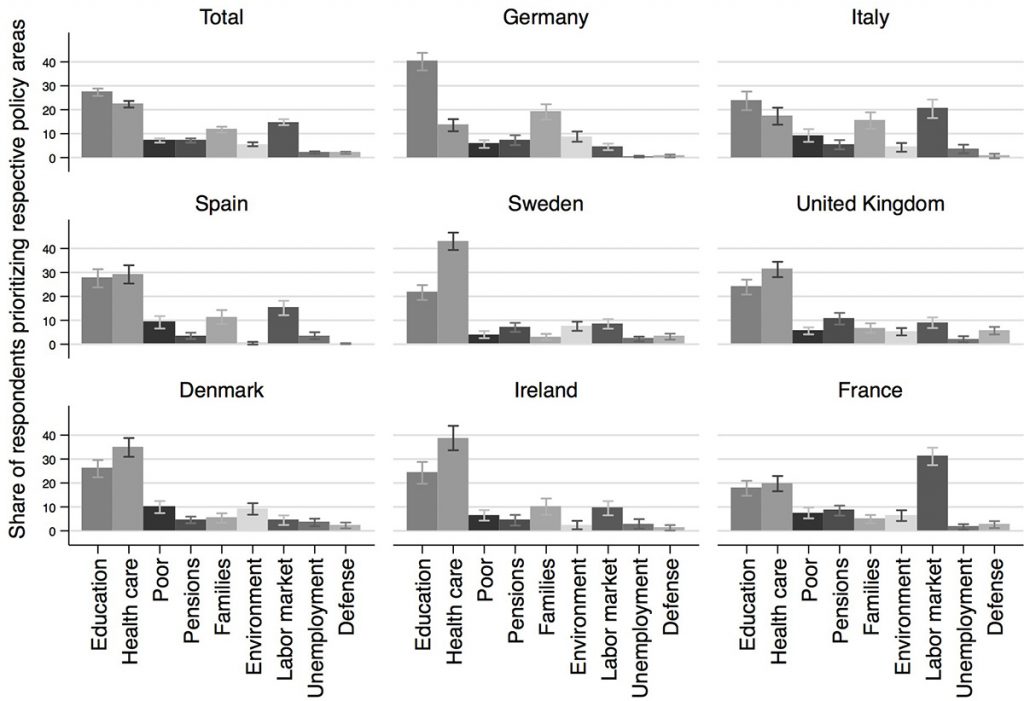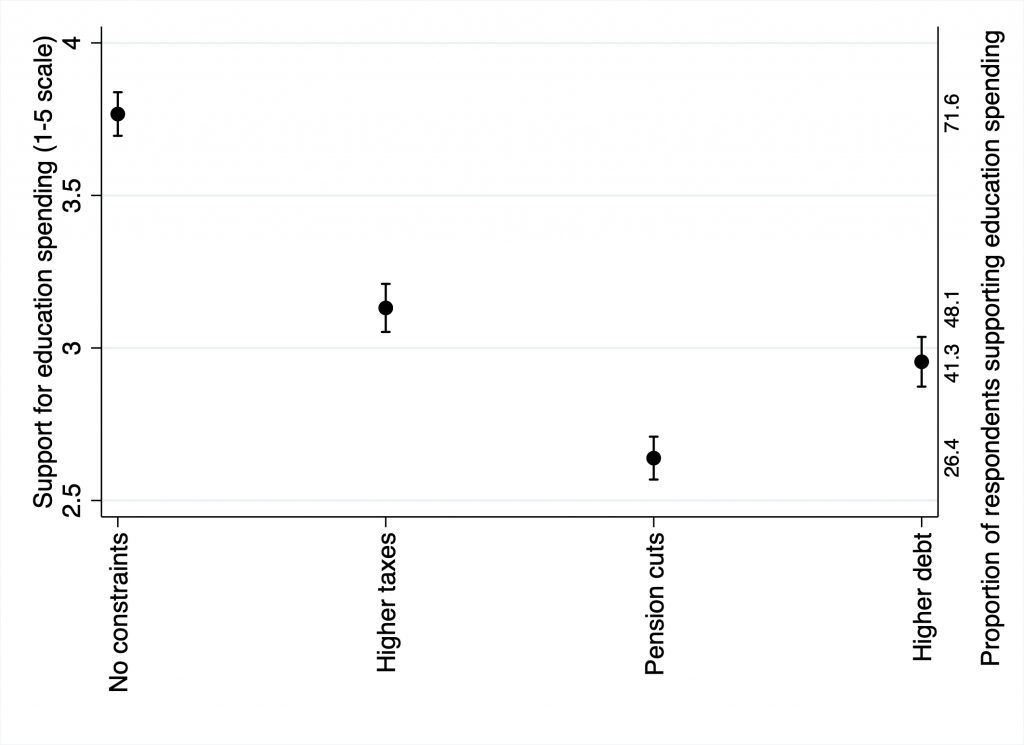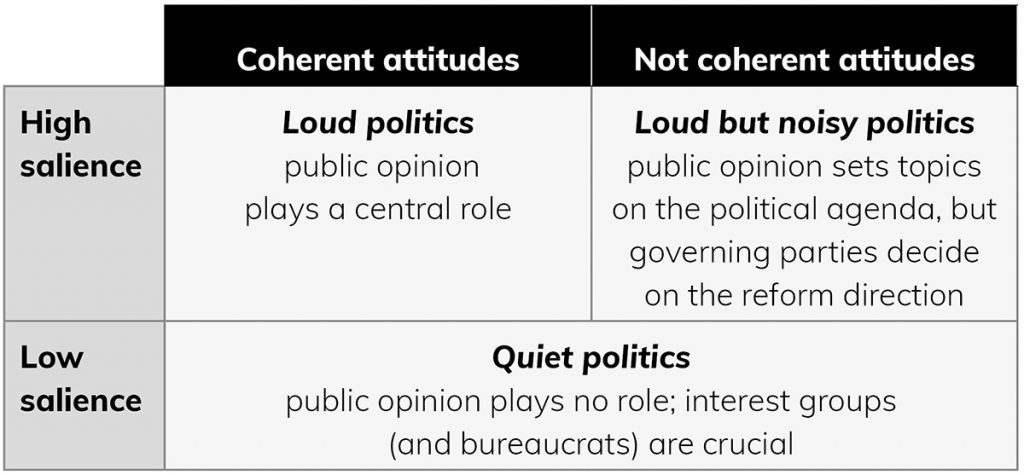Public opinion affects policy-making when the topic is salient and when most people share the same opinion, write Julian Garritzmann, Marius Busemeyer and Erik Neimanns. Yet when the public disagrees on what they want – or when many people don’t care – the influence of public opinion is significantly reduced
Everyone has an opinion on education – and what politicians should do about education systems. But when does public opinion matter? In our new book, A Loud but Noisy Signal? Public Opinion and Education Reform in Western Europe, we explain that it matters mainly when the issue is salient and the public agrees on which direction to take policy responses.

Education is an extremely popular and widely supported area. Surveys show repeatedly that 70–90% of people would like to see higher investments in education, and regard education policy as an important policy area.
However, do these large majorities continue to support educational investments when the costs become visible? That is, when respondents are informed that higher investment would come with higher taxes, increased public debt, or cutbacks in other welfare areas? And what exactly would they like to spend money on? On schools, childcare, or post-secondary education? What do people think about private schools, parental school choice, and school autonomy?
Surveys show 70–90% of people want higher investment in education, and regard education policy as an important policy area
We simply didn’t know the answers to these questions, because existing comparative public opinion surveys hadn’t surveyed attitudes on these detailed – but crucial – aspects of education policy.
Accordingly, we conducted a large representative public opinion survey in eight European countries on citizens’ attitudes towards education and social policy.
Education remains very popular even when in direct competition with other policy areas. We asked, for example, on which policy area respondents would spend more money if they could choose only one. Figure 1 shows the results. Education features prominently in all countries – only healthcare is even more popular in some countries (and labour markets in France).

Education also remains popular when the costs are made visible – but support levels decrease substantially. To illustrate, Figure 2 shows findings from a survey experiment: 72% support education spending in general. Yet when reminded that higher spending would be funded by higher taxes, support levels decrease to 48%. Even more unpopular, at 41%, is funding via higher public debt.
But what respondents oppose the most is financing additional education spending by cutting back in other welfare areas, such as pensions. Still, however, 25% support this.
In today’s so-called Silver Age of the welfare state, such policy trade-offs are omnipresent. Policy-makers and citizens are repeatedly forced to make tough choices in trade-off environments.

For public opinion to matter, it is important how salient a topic is in public and political discussions. Some topics, such as changes in the number of years children stay at school, or the introduction of tuition fees, are very pertinent. On these issues, most people have an opinion and find the topic relevant.
Other topics are much less salient. Examples include whether vocational schools should offer more maths courses or how higher education institutions should be steered internally. Some people might really care about these issues – but the majority doesn’t.
High salience is a necessary condition for public opinion to matter: public opinion only plays a role for policy-making when an issue is salient.
It doesn’t stop here. Salience alone cannot explain what role public opinion plays in policy reforms. To understand this better, we need to look at the degree to which citizens agree or disagree on certain issues. We call this 'coherence'.
Some topics are salient and most people share the same opinion. In these instances, public opinion sends a 'loud and clear signal' to policy-makers, who, for electoral reasons, have to respond. Public opinion, accordingly, plays an important role. We call this 'loud politics'.
Other topics are equally salient, but public opinion is split on the direction of reform: 'loud but noisy politics'. Public opinion sends a very ambiguous signal to policy-makers, aka 'we all want something, but we disagree on what!' In this scenario, public opinion can help raise an issue up the political agenda – but what direction policy takes is ultimately decided by the respective governing parties.

Our book shows that the answer depends on two elements: salience and coherence. Accordingly, we understand better now why it sometimes matters what people want, and sometimes doesn’t. This is also relevant for citizens, parties, and other political stakeholders, because it helps us understand the conditions under which people can get their voice heard.
The theoretical model, equally, travels to all other (social) policy areas, helping to explain why public opinion sometimes, but not always, matters.